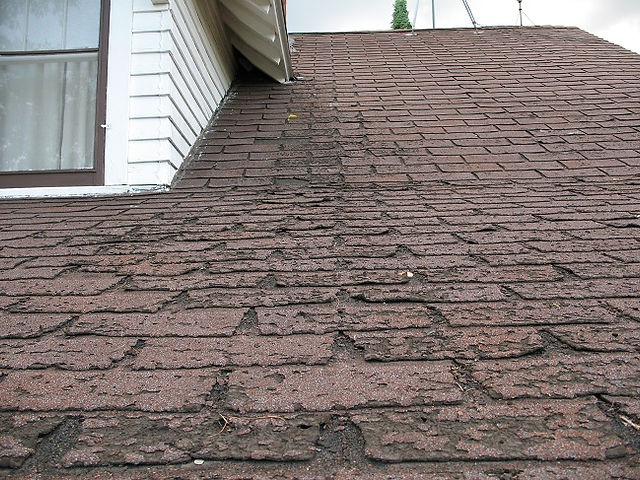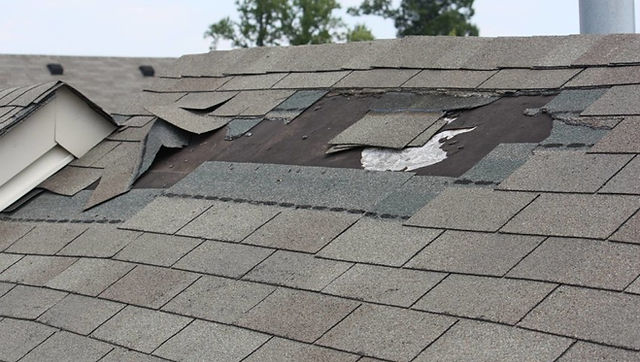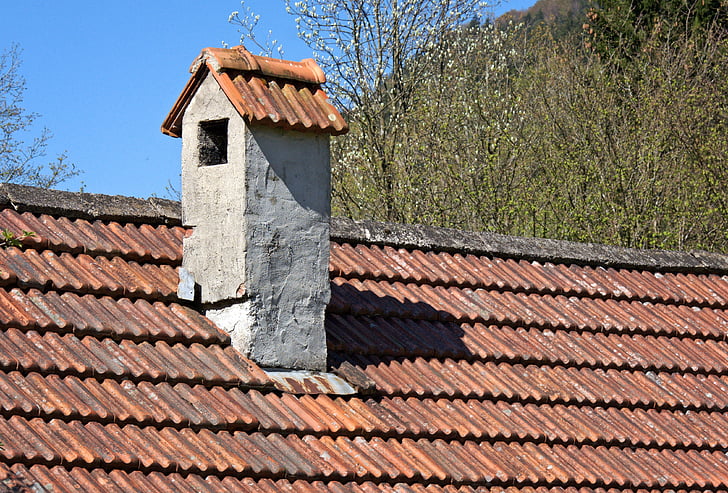In today’s article, we will explore the visual cues that indicate a deteriorating roof. As a homeowner, it is crucial to be able to identify these signs in order to address any potential roof replacement needs in a timely manner. By understanding the visual indicators, you can save yourself from the inconvenience and expenses of a complete roof failure. So, let’s explore the telltale signs that suggest it might be time to replace your roof.

This image is property of static.wixstatic.com.
Signs of a Deteriorating Roof
A well-maintained roof is crucial for the structural integrity of any building, whether residential or commercial. Over time, roofs can deteriorate due to various factors such as age, extreme weather conditions, poor installation, or lack of maintenance. It is important to understand the signs of a deteriorating roof so that you can take timely action to address the issues and prevent further damage. In this article, we will discuss the visual cues, physical indications, and environmental factors that can contribute to roof deterioration.
Visual Cues of a Deteriorating Roof
When it comes to identifying a deteriorating roof, visual cues play a significant role. By observing the exterior of your roof, you can often spot signs of wear and tear that can indicate the need for repair or replacement. Here are some important visual cues to look out for:
Missing or damaged shingles
One of the most obvious signs of a deteriorating roof is missing or damaged shingles. Over time, shingles can become loose, crack, or even completely detach from the roof. If you notice any gaps or areas where shingles are visibly missing, it is a clear indication that the roof needs attention.
Curling or buckling shingles
Curling or buckling shingles are another visual cue that your roof may be deteriorating. This occurs when the shingles begin to warp and no longer lie flat against the roof surface. Curling or buckling shingles can be caused by excessive heat, age, or improper installation. If you notice any shingles that have a wavy or curled appearance, it is recommended to have a professional inspect your roof.
Dark streaks and mold growth
Dark streaks on the roof surface can be an indication of algae or mold growth. These organisms thrive in moist environments and can cause the roof to deteriorate if left untreated. Not only do dark streaks and mold growth impact the aesthetics of your roof, but they can also contribute to shingle degradation and compromise the overall integrity of the roof.
Moss or vegetation growth
Similar to dark streaks and mold, moss or vegetation growth on the roof can be a sign of moisture retention. Moss tends to grow in damp and shaded areas, which can cause the shingles to deteriorate faster. If you notice any moss or vegetation on your roof, it is recommended to have it professionally cleaned and address the underlying moisture issue to prevent further deterioration.
Cracked or crumbling chimney
The chimney is an integral part of many roofs, and its condition directly impacts the overall health of the roof. If you observe any cracks or crumbling in the chimney structure, it could be a sign of a deteriorating roof. Cracks in the chimney can allow water to penetrate and cause further damage to both the chimney and the roof.
Sagging roof
A sagging roof is a serious issue that should not be ignored. It indicates structural damage and can pose a safety risk. If you notice a dip or sag in your roofline, it is crucial to address the issue immediately. A sagging roof can result from a variety of factors, such as weak or damaged roof support, excessive snow or water accumulation, or the aging of the roof materials.
Visible roof leaks
Perhaps one of the most obvious signs of a deteriorating roof is the presence of visible roof leaks. If you notice water stains on your ceiling or walls, it is a clear indication that your roof has been compromised. Roof leaks can lead to extensive damage to the interior of your home or building, so it is important to address them promptly.
Gutter overflow and granule loss
Keep an eye on your gutters to detect signs of a deteriorating roof. If your gutters frequently overflow, it might be an indication that your roof is not effectively channeling water away from the structure. Additionally, if you notice a significant amount of granules in your gutters or at the base of downspouts, it could be a sign that your shingles are deteriorating and losing their protective surface layer.
Warped or rotting fascia and soffit
The fascia and soffit are the elements that connect the roof to the walls of the building. They play a crucial role in protecting the roof and providing proper ventilation. If you observe any warping, rotting, or deterioration of the fascia and soffit, it could be an indication of a deteriorating roof. This may be caused by water damage, pests, or simply the aging of the materials.
Peeling paint or water stains on interior walls
While it is important to inspect the exterior of your roof, signs of a deteriorating roof can also manifest on the interior of your building. Peeling paint or water stains on interior walls, especially in the upper area of the walls, can indicate a roof leak. Ignoring these issues can lead to further damage, including mold growth and structural issues.
By being vigilant and regularly inspecting your roof for these visual cues, you can identify early signs of deterioration and take the necessary steps to address them. Remember, it is always best to consult with a professional roofing contractor if you have concerns about the condition of your roof.

This image is property of static.wixstatic.com.
Physical Indications of a Failing Roof
In addition to visual cues, there are various physical indications that can suggest a failing roof. These signs often require a closer examination of the roof, attic, or interior of the building. Paying attention to these physical indicators can help you identify potential roof issues and take appropriate action. Here are some physical indications of a failing roof:
Water stains on ceilings
Water stains on your ceilings are a clear physical indication that your roof is failing. These stains can appear as yellow or brown discoloration and are typically caused by roof leaks. If you notice water stains, it is important to address them promptly to prevent further damage to your ceiling and the overall structure.
Damp or musty attic smell
When assessing the condition of your roof, it is important to consider the attic as well. A damp or musty smell in the attic indicates moisture infiltration, which can be a sign of a failing roof. High humidity levels, roof leaks, or poor ventilation can contribute to this unpleasant odor. If you detect a musty smell in your attic, it is advisable to have a professional inspect your roof for any underlying issues.
Visible daylight through the roof boards
If you can see daylight penetrating through the roof boards from inside your attic, it is a significant indication of a failing roof. This suggests that there are gaps or openings in the roof structure, which can lead to water leakage, heat loss, and further roof deterioration. Visible daylight should never be visible through your roof, so it is crucial to have it inspected promptly.
Widespread interior roof damage
When a roof is failing, the damage is not always limited to the exterior or attic. Widespread interior roof damage can be a result of long-standing leaks or structural issues. If you notice cracked or sagging ceilings, peeling paint, or bulging drywall, it is highly likely that your roof is failing and immediate action is necessary.
Spongy or soft spots on the roof
Physical inspection of the roof itself is also essential to identify signs of a failing roof. If you notice any spongy or soft spots when walking on the roof surface, it can indicate underlying structural damage or moisture retention. These areas are likely weakened and can compromise the safety and stability of the roof. It is essential to have a professional evaluate and repair these areas promptly.
By paying attention to these physical indications of a failing roof, you can detect potential issues and prevent further damage. Early intervention is key to avoiding costly repairs or even a complete roof replacement. If you have concerns about any of these physical signs, it is recommended to consult with a professional roofing contractor for an accurate assessment.

This image is property of www.waddleexteriors.com.
Environmental Factors Affecting Roof Deterioration
While visual cues and physical indications are important in identifying a deteriorating roof, it is crucial to understand the environmental factors that contribute to roof deterioration. These factors can accelerate the wear and tear of your roof and require additional maintenance or repairs. Here are some environmental factors that can affect roof deterioration:
Age of the roof
The age of your roof is a primary determinant of its condition. Over time, roofs naturally deteriorate due to exposure to various elements. As a roof ages, it becomes more vulnerable to leaks, shingle degradation, and overall structural deterioration. Understanding the lifespan of your particular roofing material and monitoring the condition is essential for timely maintenance or replacement.
Weather and climatic conditions
Weather conditions can have a significant impact on the health of your roof. Extreme heat, cold, rain, snow, and hail can all contribute to roof deterioration. For example, frequent freeze-thaw cycles can cause the expansion and contraction of roofing materials, leading to cracks and damage. Additionally, severe storms or harsh winds can dislodge shingles or even cause them to be torn off completely.
Excessive heat and UV radiation
Excessive heat and exposure to ultraviolet (UV) radiation can cause accelerated degradation of roofing materials. Over time, the constant exposure to the sun’s rays can cause shingles to dry out, crack, or lose their protective surface layer. This can lead to decreased lifespan and increased vulnerability to water infiltration.
Heavy snow or ice buildup
In regions with cold climates, heavy snow or ice buildup can pose a risk to the integrity of the roof. Excessive weight from snow accumulation can strain the structure and potentially lead to collapse. Additionally, melting snow or ice can seep into cracks or gaps in the roof and cause water damage. Proper insulation and maintenance are crucial in regions prone to heavy snowfall or ice storms.
High winds and flying debris
Strong winds can be particularly damaging to roofs, especially if they reach high speeds or carry debris. Wind can lift and dislodge shingles, expose vulnerable areas of the roof, or cause branches and other debris to impact the roof surface. Regularly clearing debris from the roof and ensuring that shingles are properly secured can help mitigate the impact of high winds.
Poor ventilation and excessive humidity
Proper ventilation is essential for the overall health of your roof. Poor ventilation can lead to excessive humidity buildup in the attic or roof cavity, which can promote the growth of mold and compromise the structural integrity of the roof. Additionally, inadequate ventilation can contribute to excessive heat retention, accelerating the degradation of the roofing materials.
Infestation of insects or pests
Insects and pests can wreak havoc on roofs by causing damage to shingles, chewing through roofing materials, or creating nests. Wood-boring insects, rodents, or birds can compromise the structural integrity of the roof and lead to leaks or other forms of damage. Regular inspections and pest control measures can help prevent infestations and protect your roof.
Tree limbs and branches in contact with the roof
Overhanging tree limbs or branches in contact with the roof can cause significant damage over time. As branches sway in the wind, they can scratch or dislodge shingles, creating openings for water infiltration. Falling tree limbs during storms can cause severe damage or even puncture the roof. Proper tree maintenance, including trimming branches away from the roof, can help prevent such damage.
Improper installation or previous repairs
Finally, improper installation or previous repairs can contribute to roof deterioration. If the roof was not installed correctly, it may have inherent weaknesses or vulnerabilities that can lead to premature deterioration. Similarly, if previous repairs were not performed properly, the affected areas may be more prone to damage. Hiring a qualified and experienced roofing professional for installation and repairs is crucial to ensure the longevity of your roof.
Understanding these environmental factors and their impact on your roof can help you take proactive measures to minimize deterioration. Regular inspections, proper maintenance, and timely repairs or replacements can prolong the lifespan of your roof and protect your investment.
In conclusion, a deteriorating roof presents a significant risk to the integrity of your building. By being aware of the visual cues, physical indications, and environmental factors that contribute to roof deterioration, you can identify potential issues early on and take appropriate action. Regular inspections by a professional roofing contractor are essential to ensure the longevity and safety of your roof. Remember, addressing roof problems promptly can save you time, money, and headaches in the long run.

This image is property of i.visual.ly.
